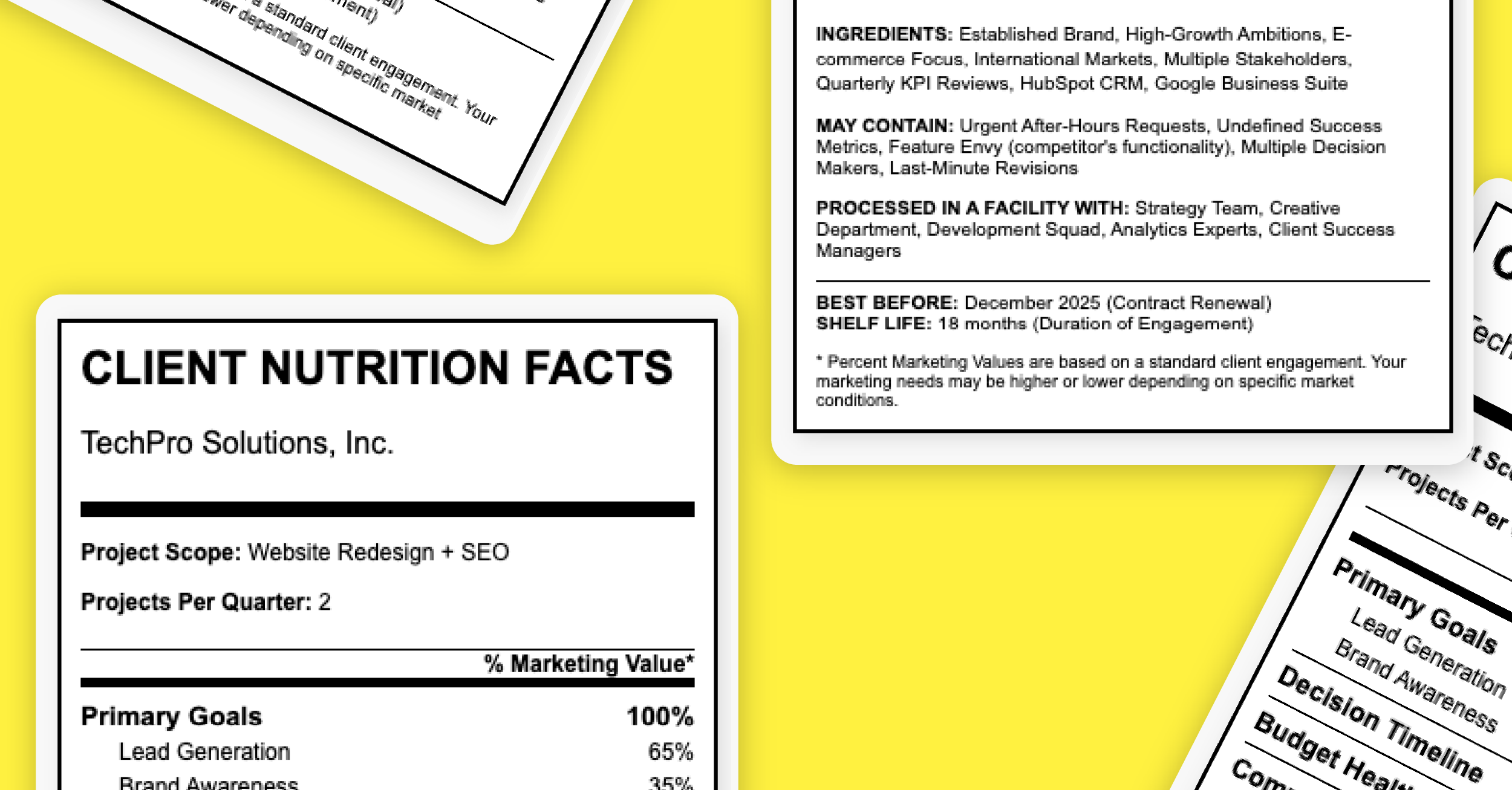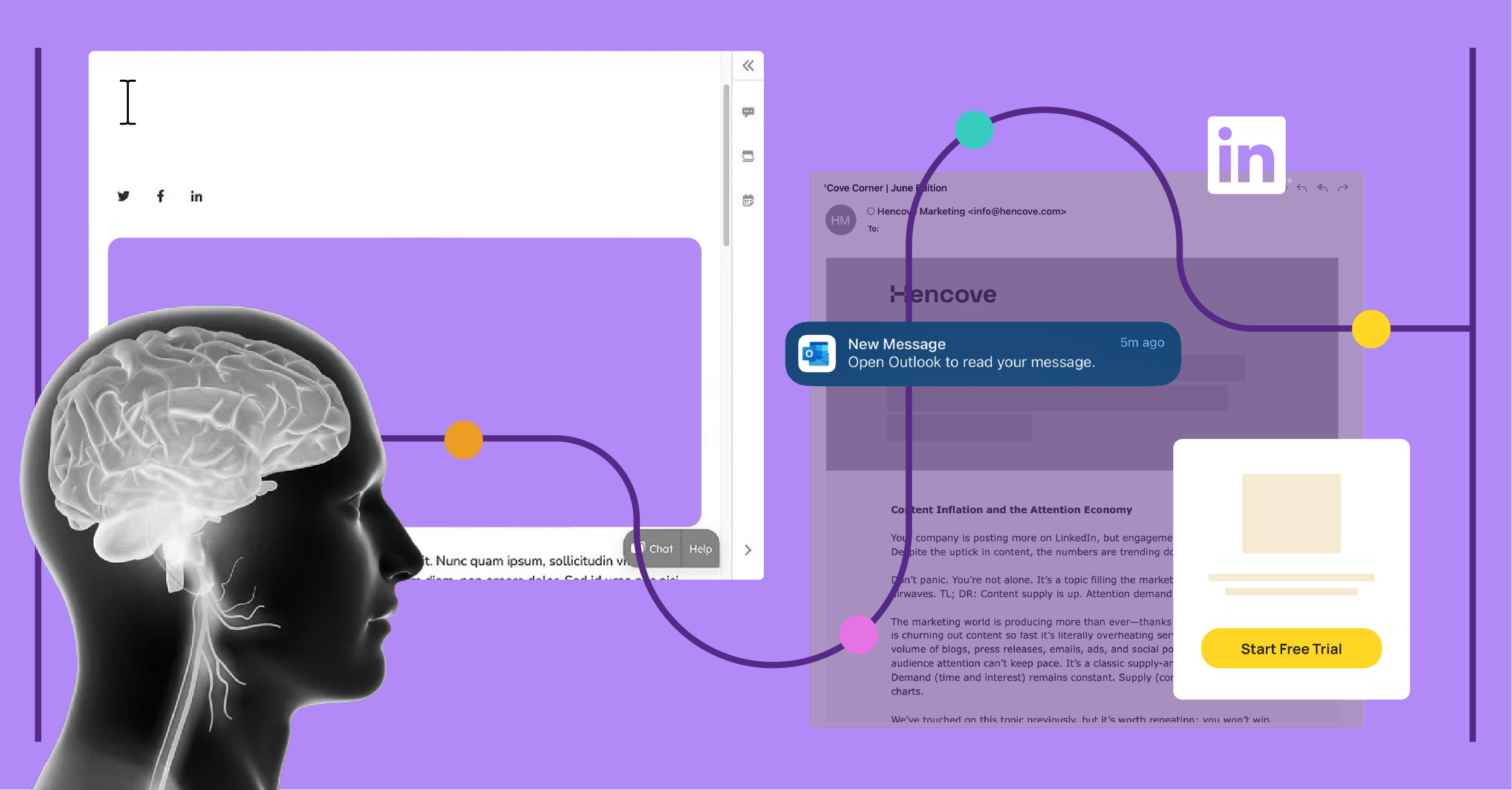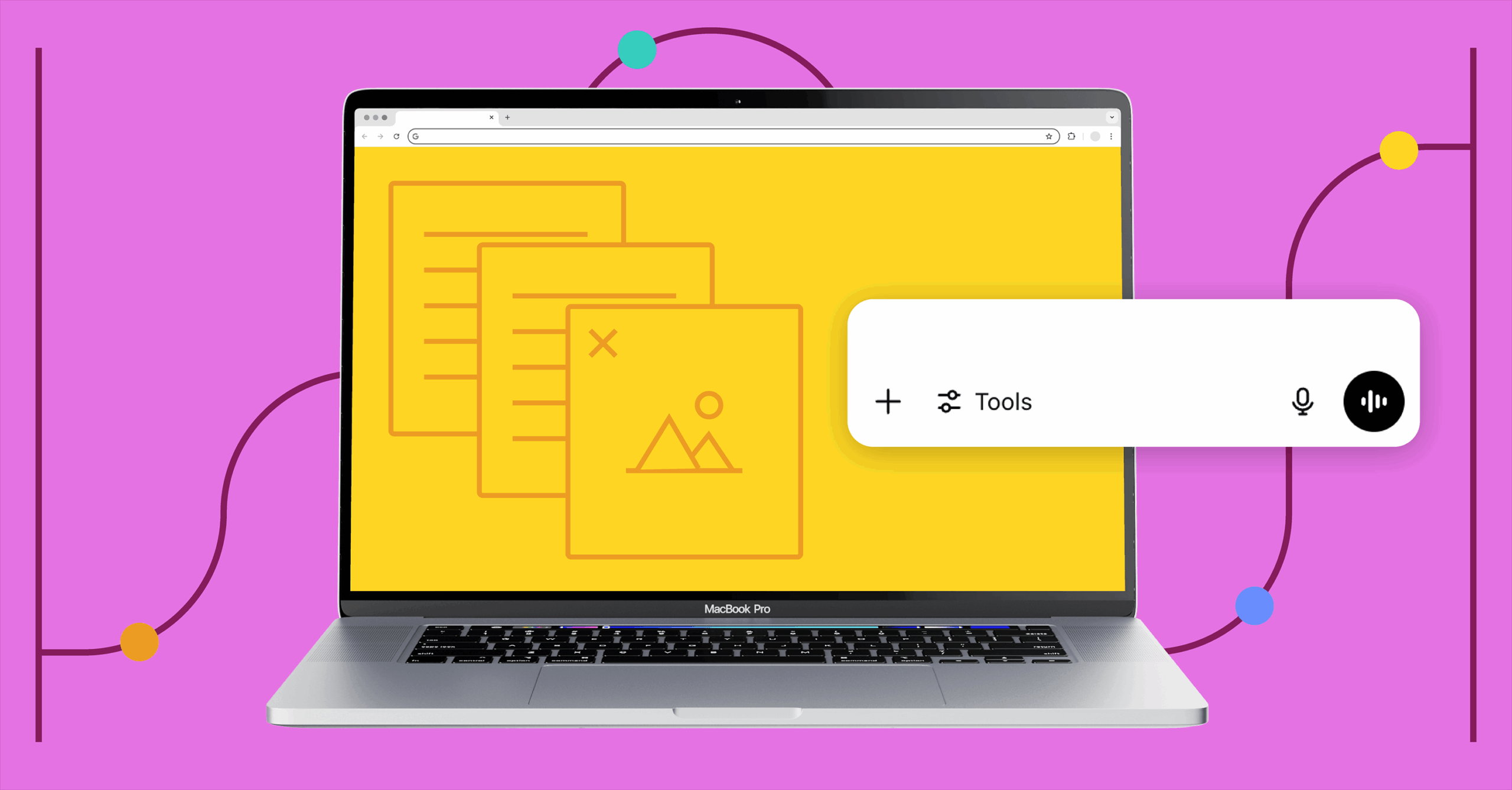Picture this: You’re in a client meeting and everything is going according to plan. They’re nodding, agreeing to timelines, and saying all the right things, yet something feels off—the energy is low, your questions aren’t driving the insights you’d hoped they would, and you just can’t seem to find the right rhythm. Whether you’re ramping up a new relationship or holding a routine check-in, it’s important to evaluate your interactions and identify factors that impact compatibility.
At Hencove, we’re constantly reflecting on our client relationships, taking note of what works well, and flagging areas in need of attention. It’s how we build rapport, ensure alignment, and make the best possible decisions for both our agency and the businesses we serve. And it’s helped us serve up an unexpected but useful method for understanding the nuances wrapped into every relationship: the nutrition label.
Why Nutrition Labels Work for Business Relationships
Whether you’re fueling your body or cultivating a business relationship, nutrition labels enable healthy, well-informed choices. They provide transparent, standardized information—ingredients, serving sizes, potential allergens, and nutritional value—and help you determine whether something is a good fit.
Let’s unpack the core elements of client chemistry.
The “Ingredients” List
Just as nutrition labels list food ingredients in order of prominence, a client’s “ingredients” can reveal the key elements of their working style. Is communication their primary component? Are they deadline driven or process focused? Understanding these core pillars can help you customize your approach from day one. For example, if a client’s top ingredient is “quick decision-making,” you’ll know to prepare concise options instead of long decks. If it’s “collaboration,” you might lean into workshops and brainstorming sessions.
“Calories”: The Energy Exchange
Some clients naturally drive momentum and set the pace for the team’s creativity, while others thrive by drawing energy from collaboration and feeding off the ideas around them. This isn’t about good or bad. It’s about understanding the energy dynamics so that you can plan accordingly and ensure sustainable growth. Recognizing whether a client fuels or follows allows you to design the right balance—building in checkpoints for high-energy drivers or creating space for reflection and input when collaboration is the source of momentum. By tailoring how you show up, you keep the exchange balanced and sustainable for both sides.
“Serving Size”: Right-Sizing Expectations
What’s the optimal portion of work to take on at once? For some, that might mean small, clearly defined projects; for others, it’s a larger, ongoing scope that allows for deeper integration. Getting the serving size right prevents scope creep and ensures that expectations are realistic for everyone involved.
“May Contain”: Removing the Friction
Every partnership has sticking points, and that’s okay. The key is to identify potential problems early on so that you can address them proactively. Perhaps they “may contain” last-minute changes, conflicting feedback from multiple decision-makers, or ambitious timelines. Knowing these foibles up front can help you build in the right safeguards, avoid pitfalls, and find alignment.
“Processed With”: Curating Team Compatibility
Every team has different preferences that pave the way for a successful relationship. Some partnerships thrive when there’s room for humor and creativity. Others click when there’s structure, clear objectives, and consistency. “Processed with” is all about identifying and incorporating the conditions for optimal collaboration—whether it’s a perfectly timed GIF, a shared love of a beautiful Gantt chart, or a well-organized meeting agenda sent in advance of a call.
What Our Team Discovered
Recently, we tested the nutrition label on our own client partnerships—past, present, and imagined. While some team members focused on emotional dynamics, others touched on collaborative compatibility, agency-wide values, and lessons learned from former engagements. Across every interpretation, one theme stood out: communication.
Whether someone was highlighting positive ingredients or potential allergens, communication style, frequency, and clarity came up again and again. Much more than a personal preference, this spoke to a fundamental component impacting project success.
The exercise also helped us recognize the individual assumptions and perspectives that color our client interactions, sparking valuable conversations about the unique preferences and approaches we bring to our work. By understanding each other better as individuals, we amplified our strength as a team, ensuring that we refine our approach to client relationships with a shared perspective and aligned mindset.
It’s Time to Start Reading Between the Lines
Ultimately, we’re not here to judge or categorize clients by grams and percentages. Rather, the nutrition label helps us sharpen our instincts and decipher subtle signals that indicate how two teams can work together most effectively. When you can spot unspoken needs, anticipate potential friction points, address compatibility factors, and facilitate productive conversations early and often, you lay the foundation for an extraordinary partnership.
Curious about what your own business relationships might look like as nutrition labels? We built an interactive tool that lets you experiment. As you create your own labels, consider these guiding questions:
- What “ingredients” make up your ideal client? Which tend to cause problems?
- If you could only monitor three “nutrients” in a client relationship, what would they be?
- What client “allergens” should you watch for that could derail projects?
- What’s your recipe for turning a difficult client interaction into a productive one?
- If your favorite client were a food, what would they be and why?
Whether you’re an agency thinking about clients, a client evaluating vendors, or someone just interested in understanding relationships from a fresh angle, give it a try. You might discover the recipe for your best industry partnerships.



